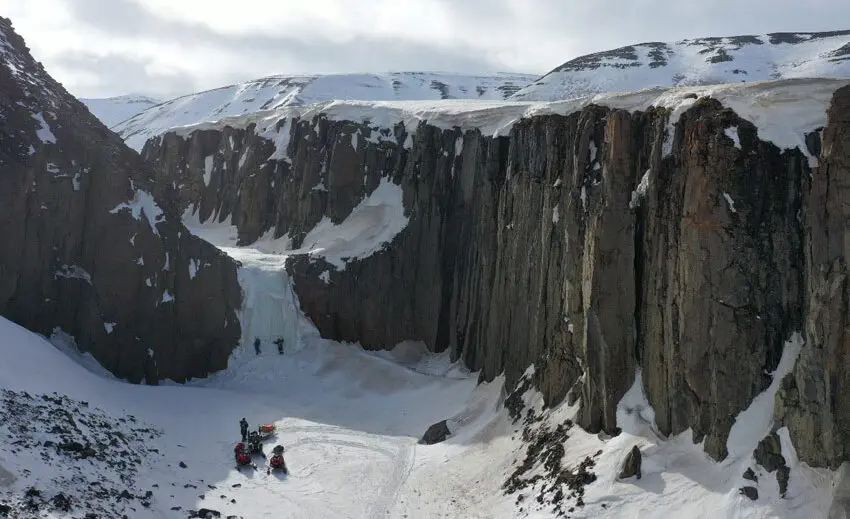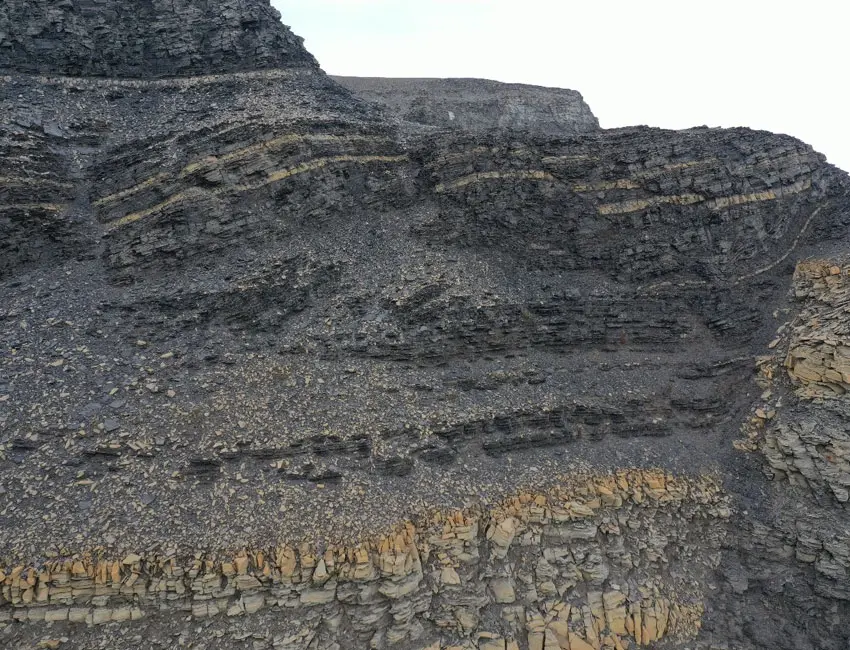World Environment Day

Hyperittfossen - with Peter Betlem, Gareth Lord and Tereza Mosočiová. Photo: © Peter Betlem. The frozen waterfall at Hyperittfossen is surrounded by igneous intrusions belonging to the Diabasodden Suite. Like faults, intrusions may allow CO2 to escape from the reservoir. Explore Hyperittfossen in 3D by visiting its Svalbox.no entry: https://www.svalbox.no/portfolio/hyperittfossen-2/
Top image: Hyperittfossen – with Gareth Lord and Tereza Mosočiová. Photo: © Svalbox.no. The frozen waterfall at Hyperittfossen is surrounded by igneous intrusions belonging to the Diabasodden Suite. Like faults, intrusions may allow CO2 to escape from the reservoir. Explore Hyperittfossen in 3D by visiting its Svalbox.no entry: https://www.svalbox.no/portfolio/hyperittfossen-2/
UNIS/UiO/NCCS PhD candidate Peter Betlem is exploring Svalbard for carbon capture, utilization, and storage potential.
5 June 2020
Text: Peter Betlem, PhD candidate
Parts of Svalbard are well over a billion years old, yet sediments as young as the Last Glacial Maximum (some 10.000 years ago) now lie adjacent to them, with most units accessible at the surface. Almost every valley is home to its own glacier, permafrost is widespread and not a single tree tall enough to hide a local resident polar bear.
Svalbard is a truly exceptional place, and not just for its unique biodiversity. The barren rocks help us on our way to understand complex systems not exposed or difficult to study elsewhere. As the Arctic experience several times the warming rate of the temperate zones, changing patterns around the archipelago inform us about a changing climate that will not significantly affect the rest of the world for years to come.
The use of carbon capture, utilization and storage (CCUS) – i.e. storing CO2 in the ground – has been suggested as a potential mitigation strategy to the likely anthropogenic (i.e., man-caused) global warming, and it is studied locally in Longyearbyen at the Longyearbyen CO2 Lab sequestration site. Like many frontier towns, Svalbard’s settlements are powered by either coal or petroleum, and Longyearbyen is no exception. Unlike other frontiers, however, Svalbard has the potential to bring about change – even under the current lockdown conditions. The geological processes here are used as a template for Norwegian and European CCUS activity in the North Sea (e.g., by the Norwegian CCS Research Centre, www.nccs.no).
The potential of the archipelago is of such importance that even during the Covid-19 pandemic, when international colleagues were grounded and local courses limited to digital teaching, UNIS prioritized the collection of new data sets. In this case, the acquisition of digital outcrop models. Digital outcrop models allow for digital access to a site, and enable you to take measurements, characterize rocks, and see what remote parts of Svalbard look like ahead of a visit (see also www.svalbox.no/map for an interactive overview of digital models and other data around Svalbard).
Such data are important for not only digital learning purposes, but also critical to academics and industry partners unable to make the field visits themselves. The digital outcrop models recorded on the trip contribute to ongoing CCUS research activities, and thereby prevent the Covid-19 lockdowns from slowing down technological advancements needed to secure the planet’s thermostat.
